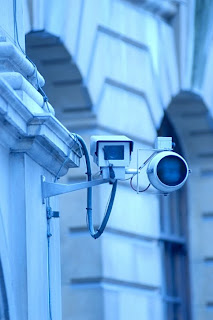
A wise man once told me that with anything that you do you always need to C.Y.A.(cover your assets). Lets face it, if we did not have things that other people wanted, we would not need to protect them. A great way to protect your assets is to either have someone watch your possessions twenty four hours a day, which is extremely costly, or invest in a security surveillance system.
This is part one of a three-part series to help you answer a few questions that you may have about protecting your property, investments, or classified information. In part one we will go over what types of cameras to use, where to place the cameras for maximum coverage, and how you should connect the cameras to your video management system. Part two will touch base on what type of video management system that you should be using and how much storage that you will be needing. Third and final segment will go over video analytics and viewing the videos.
Camera Selection
Security cameras are the eyes of a video surveillance system. Cameras should be deployed in critical areas to capture relevant video. There are two basic principles of placement. First, there are the use of chokepoints. Chokepoints are areas where people or vehicles must pass to enter a certain area. Examples include doorways, hallways and driveways.This is a very inexpensive way of recording who has entered your facility.
Second is covering the assets. These are the specific objects that need coverage, i.e. safes, cars on a car lot or merchandise in a store. The asset is defined relative to the needs of the organization. You will then need to prioritize what your assets are and choose the location of the cameras. Now we can take a look at three of the main characteristics of camera types.
Fixed or PTZ: Cameras can be fixed to only look at one specific view or be movable through the use of panning, tilting and zooming (i.e., moving left and right, up and down, closer and further away). Most cameras used in surveillance are fixed. PTZ (pan, tilt, and zoom) cameras are generally used to cover wide fields of views and should be used only if you expect to actively use the cameras on a daily basis. The reason fixed cameras are used so often is that they are a conservative choice over the PTZ's due to higher prices. Fixed cameras can run $200-$500 and PTZ cameras are upwards of $2000.
Thermal,Infrared, and Color: In video surveillance a black and white image makes sense when lighting is very low . In those conditions, infrared cameras produce black and white images. Infrared cameras require special lamps (infrared illuminators) that produce clear image in the dark. Only silhouettes are produced with thermal cameras and are used in areas with little or no light .In daytime and well lit areas color cameras are a well planned choice.
IP or Analog: The largest trend in video surveillance today is the move from analog cameras to IP cameras. While all surveillance cameras are digitized to view and record on computers, only IP cameras digitize the video inside the camera. Even though most infrared and thermal cameras are still only available as analog cameras, you can only use megapixel resolution in IP cameras.
Most organizations mix and match of their types of cameras . For instance, an organization may use infrared fixed analog cameras around a perimeter with an analog PTZ overlooking the parking lot. On the inside, they may have a fixed megapixel camera covering the warehouse and a number of fixed IP cameras covering the entrance and hallways. The monitoring, playback, and system configurations can all be maintained by the IE browser without hassles.
Connections
Cameras are connected to video management systems for the purpose of recording and managing access to video. There are two main characteristics to decide on for connecting your system
Analog and IP: Video can be transmitted over your computer network (IP) or it can be sent as analog video. Most video feeds are sent using analog but retooling to IP transmission is rapidly increasing. Both IP cameras and analog cameras can be transmitted over your computer network. IP cameras can connect directly to an computer network and analog cameras cannot. However installing encoders to transmit analog feeds over IP is a effective way to keep costs down by not having to replace the entire system. Encoders will have an input for analog video feed and output it in a digital transmission stream so that it can be transmitted over an IP network..
Wired or Wireless: Video can be sent over cables or though the air, whether you are using IP or analog video. Generally, the most cost effective and least troublesome way is wired, being more reliable with less of a headache for the administrators of the system. However, wireless is a great option for transmitting video where running wires can be quite difficult in certain areas such as playgrounds,remote buildings and off site areas which you want to survey.
There will be two more segments to come on surveillance cameras and accessories. If you have any needs for surveillance equipment in the meantime, please contact www.camerasecuritynow.com. And remember to always Cover Your Assets.